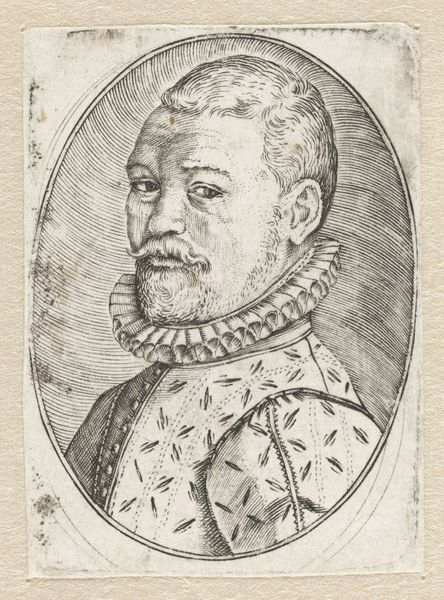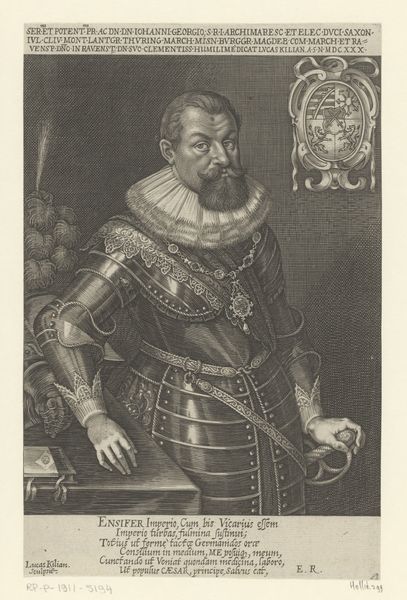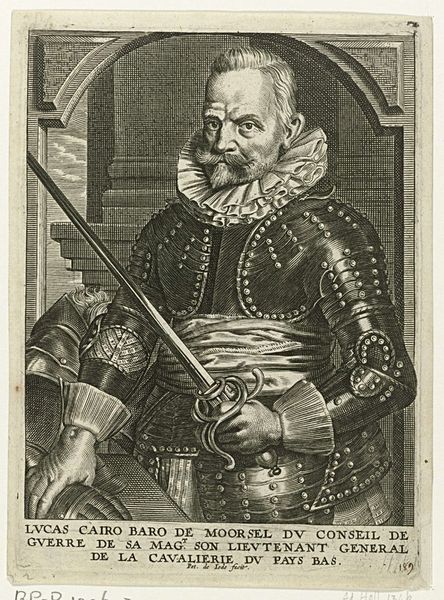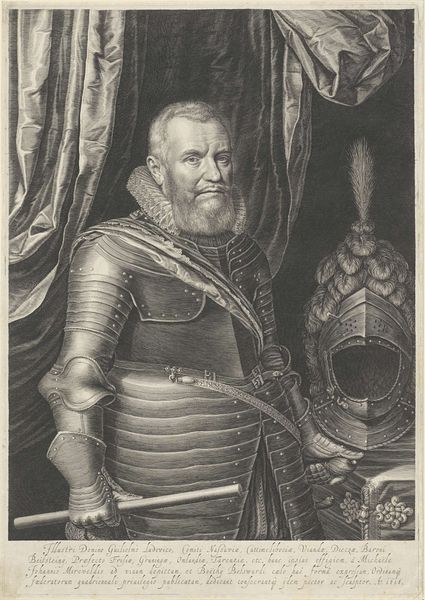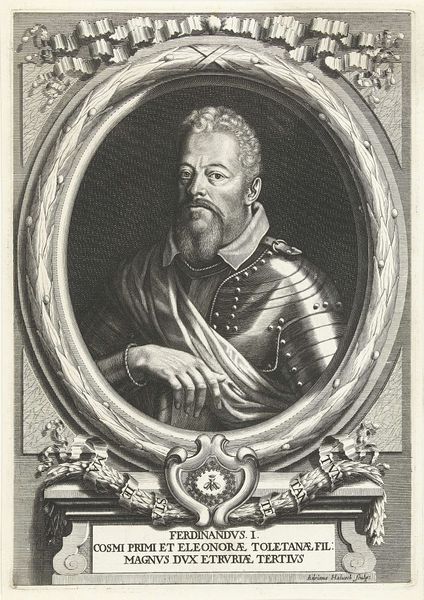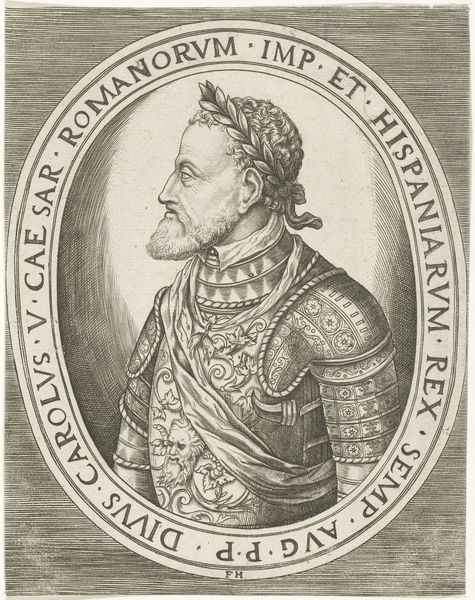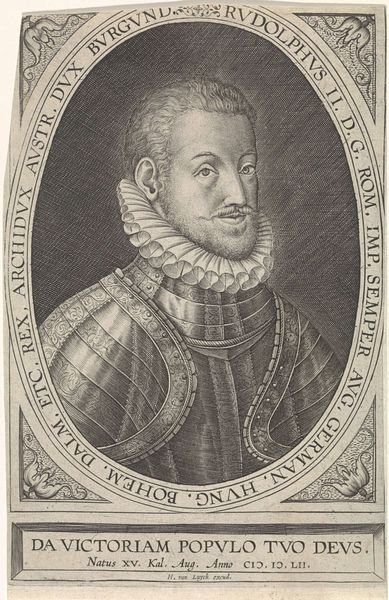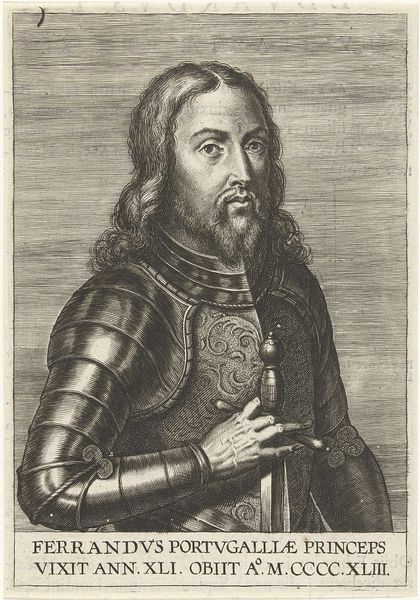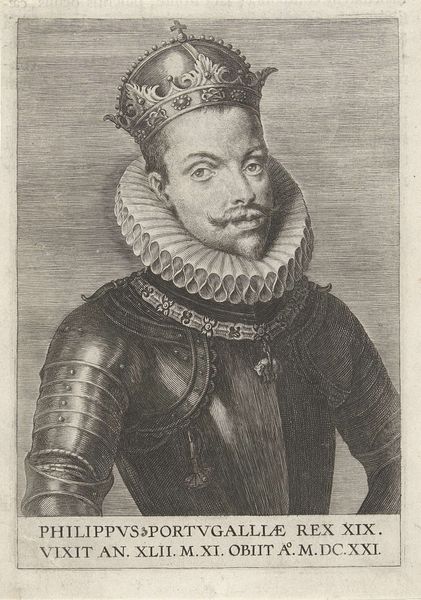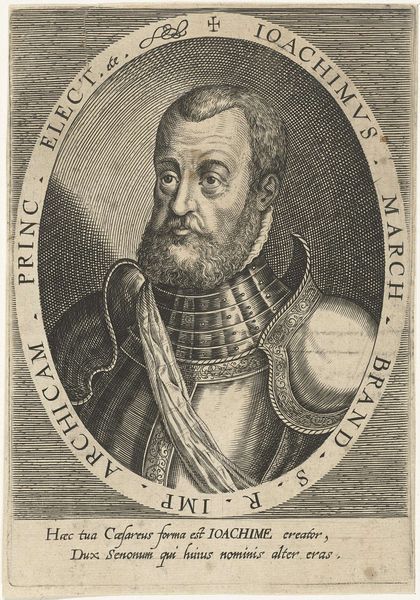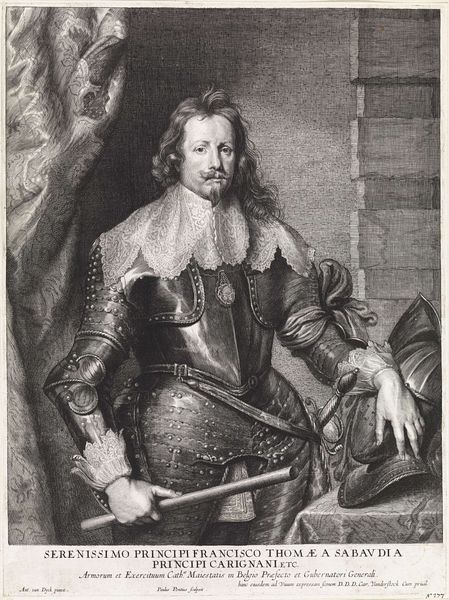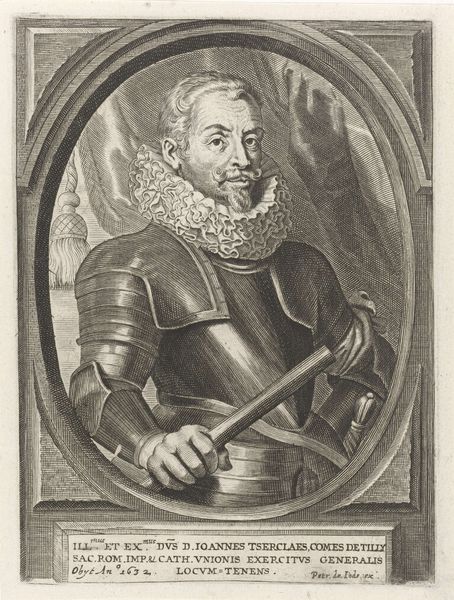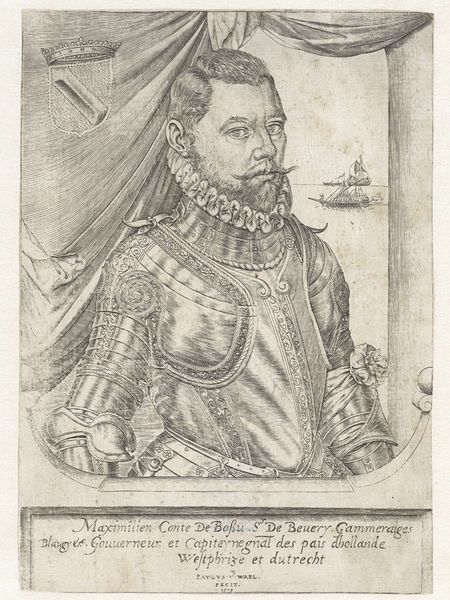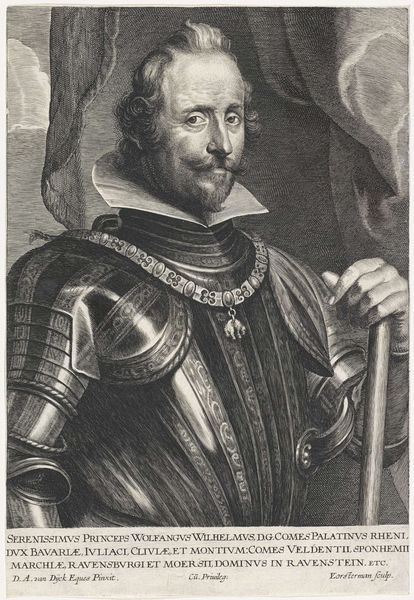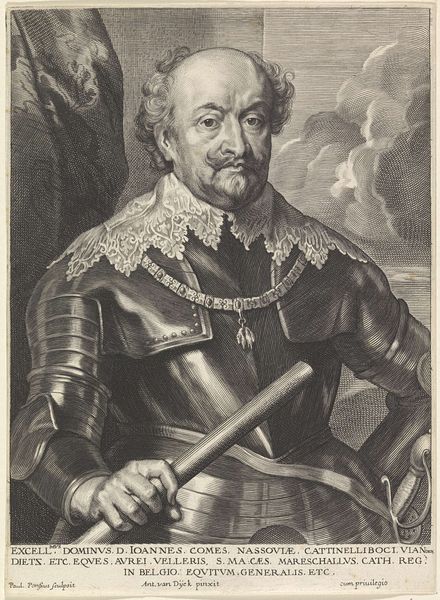
Alfonso I d'Este (1476–1534), Duke of Ferrara 1525 - 1550
0:00
0:00
oil-paint
#
portrait
#
portrait
#
oil-paint
#
figuration
#
11_renaissance
#
classicism
#
black and white
#
chiaroscuro
#
history-painting
#
armor
#
italian-renaissance
Dimensions: 52 7/8 x 38 1/4 in. (134.3 x 97.2 cm)
Copyright: Public Domain
Curator: Standing before us is a captivating oil painting identified as "Alfonso I d'Este (1476–1534), Duke of Ferrara." It dates from between 1525 and 1550 and resides here at the Met. Editor: He certainly looks like he means business, doesn’t he? All that armor, and the dark background just makes him pop. There's something intimidating yet opulent about it. It feels very much like an assertion of power and strength. Curator: Absolutely. Notice the dramatic chiaroscuro. It’s used to sculpt the figure, emphasizing the play of light on the highly polished armor. His expression, though, seems quite human, softened by the texture of his beard. Editor: It's as if he's simultaneously trying to look formidable for the sake of the portrait but he is letting a touch of vulnerability shine through his eyes. It adds a layer of complexity. Curator: And have you observed the pose? His hand rests on what appears to be a cannon, while the other grips his sword hilt. This is about far more than just personal identity; it signals his authority as a ruler and military leader during the Italian Renaissance. The meticulous depiction of armor and finery speaks to the material culture of the time, demonstrating affluence and rank. Editor: There is also something unsettling with the high level of contrast; the face, especially around the eyes, almost seems to merge with the dark background; it also flattens out the texture in other parts. The cannon and some armor details lack their presence with it all but dissolving away. I'm drawn back to the eyes again and again, the focal point, though a bit scary, has presence. Curator: That dissolving detail can be interpreted through several art history and formalism lenses, but to my point, it certainly makes him stand out among his surroundings... Perhaps something of his reign to come or something of his legacy left in painting. Editor: Looking at "Alfonso I d'Este" again now, it's fascinating how a single painting can communicate so many things simultaneously, from the personal to the political. Curator: Indeed, the painting masterfully captures not only the likeness of a man, but also the weight of history and the intricacies of Renaissance society. It makes you think about the nature of portraiture itself and what we seek to preserve through art.
Comments
No comments
Be the first to comment and join the conversation on the ultimate creative platform.
